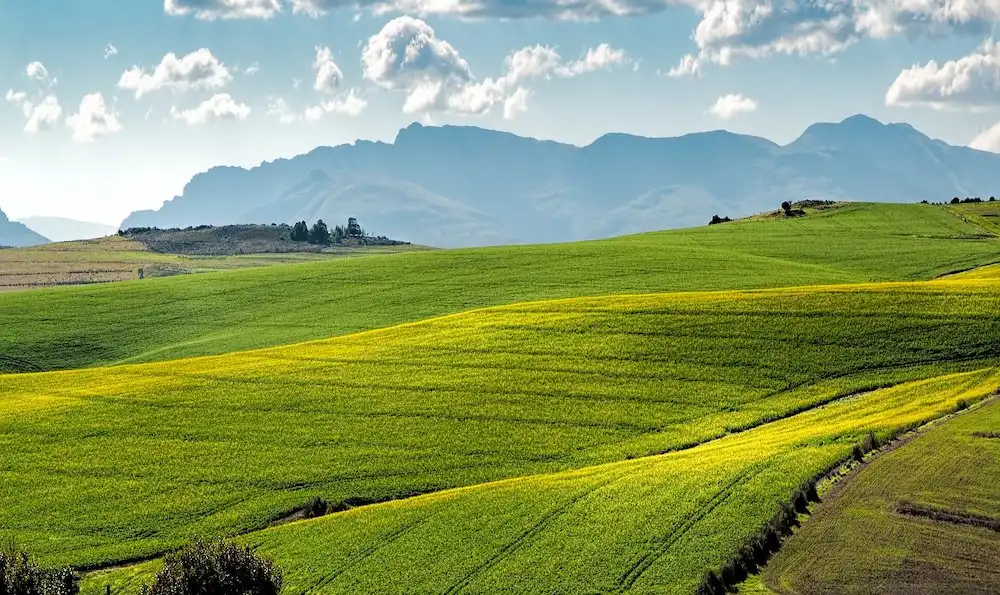For years, both scientists and farmers have debated whether the use of cover crops — plants used to cover the ground after harvesting of main crops — have a positive or negative impact on subsequent crop yield. Hundreds of studies have been performed on the subject, with each resulting in a different conclusion.
Researchers at the Indiana University School of Science in Indianapolis compiled data from more than 100 field trials across the globe and found that cover crops have a net-positive impact, overall increasing crop yield by 2.6% globally. Standing out among the findings was how substantially yields benefited from the use of legumes as cover crops, including peas, vetch and clover.
Yu Peng, a Ph.D. student in the School of Science, led a comprehensive study using literature synthesis and meta-analysis to quantify the results of the data gathered. Peng and his team collected over 1,000 records of field-based yield data and analyzed how cover crop type, soil texture, soil water conditions, aridity, cover crop duration and other management practices impact crop yield.
“Studying in Indiana, surrounded by a rich agricultural heritage, I’ve witnessed firsthand challenges faced by farmers, including soil degradation and nutrient loss,” Peng said. “This research aims to boost the adoption rate of cover crops by addressing farmer concerns about potential yield loss in the main crop, thereby benefiting agro-environments.”
Leguminous cover crops showed a 9.8% yield increase compared to non-leguminous cover crops — like rye, oat, canola and mixture cover crops — which showed no statistical significance. Additionally, introducing leguminous cover crops without fertilizing main crops resulted in a 21.8% yield increase.
Corn, the most produced crop in the Midwest and the U.S., is one of two crops that benefit most from any kind of cover cropping, with an increased yield of 4.7%. Barley, another major U.S. crop, saw the most improved yield at 8.3%. Data suggests that by using leguminous cover cropping, yields could be even higher.
Researchers discovered that cover crops have the most benefit under nutrient-limited conditions. For instance, rainfed drylands had an increased yield from cover crops, whereas rainfed non-drylands saw no significant impact. Additionally, a 10.5% yield increase was observed when fertilizer wasn’t used alongside cover cropping, but the yield increase dropped to 1.8% when combined with fertilizer treatment.
Coarser soils like sandy loam and loamy sand tended to increase yields under cover cropping. Conversely, fine-textured soils like clay-loam and clay soils saw a reduction under cover cropping, negatively impacting yield.
“Not every cover crop is suitable for every field management practice in every environment,” Peng said. “My hope is this article leads to increased adoption and smarter cover cropping methods by offering comprehensive guidance in choosing optimal cover crop strategies based on their objectives, including the type of cover crops to use, which management practices to combine with and considerations of local meteorological factors.”
Cover crops control soil erosion, increase soil moisture, improve soil structure and increase organic matter. Lixin Wang, a professor in the Department of Earth and Environmental Sciences and corresponding author on the study, said he hopes this work encourages more widespread adoption of cover crops, not only for the benefits it provides farmers but also for Earth’s environment.
“Agriculture leaves a large environmental footprint,” Wang said. “Often, it pollutes water and produces plenty of greenhouse gases. That’s why we want to minimize the environmental impact while also ensuring we have a sufficient crop yield. We believe cover crops are a potential tool to help achieve this.”
Agriculture is a vital part of Indiana’s economic health. It’s estimated that farming contributes $35.1 billion to Indiana’s economy yearly. Farmland covers two-thirds of the state’s total acreage. But according to data from the Indiana State Department of Agriculture, less than 10% of Indiana farmers plant cover crops.
Currently, Peng is working with farmers in Fort Wayne, Indiana, to conduct field research of his own regarding cover crops, their use and their impact within the local community. Overall, he has visions for a wide-scale series of research projects, tackling various nature-based agricultural solutions spanning from the corn-belt regions of the United States to a worldwide scale.
“After providing scientific evidence to farmers that using cover crops will benefit the environment without yield loss, the next frame explores what else it can contribute to,” Peng said. “During my research, I always thought ‘You plant your corn and harvest it, but what else is there to think about?’ Greenhouse gases could be one answer.
“If cover cropping proves effective in mitigating greenhouse gas emissions, it suggests that farmers could fight against global warming through a cost-effective and widely replicable approach.”
School of Science faculty member Pierre-Andre Jacinthe, who has years of experience studying biogeochemistry, hydrology and soils, and Wei Ren of the University of Connecticut also contributed to the report. This research is supported by a four-year United States Department of Agriculture grant awarded to Wang, Jacinthe and Ren, and was published in the journal Field Crops Research.
Read the paper: Field Crops Research
Article source: Indiana University
Author: Devin Voss
Image credit: CCO






